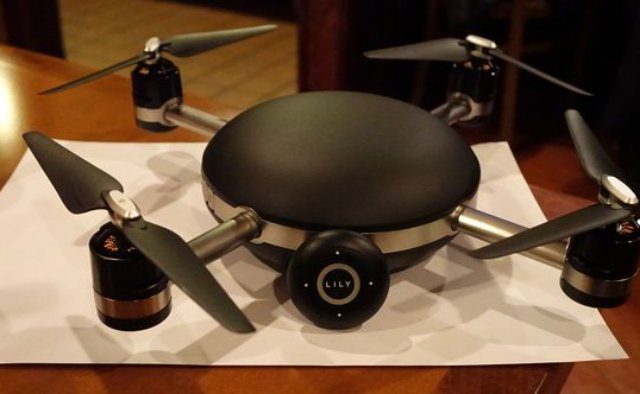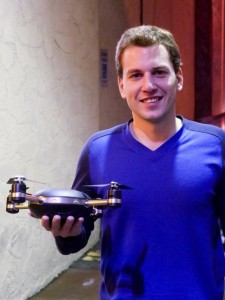Antoine Balaresque, who co-founded the Lily company in the basement of a University of California, Berkeley robotics lab, set out to make the simplest drone — make that, flying camera, or one that didn’t require any flight skills.
In his dream, you would just throw the device in the air, and it would begin photographing and following you on your journey.
He and co-founder Henry Bradlow started working on prototypes in 2013, and liked what they came up with. They produced a killer demo video that they put on YouTube, and picked up nearly 10 million views and the fascination of the tech press.
From there, the pair nabbed $16 million in funding, from the likes of Spark Capital, the Winkelvoss twins and former football great Joe Montana. They began taking pre-orders (the camera is $799) and submitted the camera in various contests.
Lily won a coveted CES 2016 Innovation award. Even though its makers are just meeting clients at CES in a suite, they are not showing a working version of the Lily camera here. They skipped out on the big “Drone Rodeo” event this week that featured the biggest names in drones, like Parrot and DJI.
What they did do here at CES was announce some news, the results of the pre-order campaign.
Lily pulled in orders worth $34 million, or 60,000 cameras, says Balaresque, and they will start shipping in the summer. That was originally slated for February.
Or put another way, some 60,000 consumers bet that the Lily camera, sight unseen, will do what it actually says it does: flies and follows you around without any flight experience. And that it won’t crash into trees or people.
In an interview with USA TODAY, Balaresque, 24, says he had expected pre-sales of $100,000 to $200,000. “That was our ballpark estimate,” so he’s thrilled with the huge response.
The inspiration for the camera was his mom, who never appeared in family pictures, because she was taking them. He wanted to invent something that would get her in the show, and so simple, she’d use it.
The Lily is a quadcopter, like a traditional drone, with a built-in camera that can shoot 1080p hi-def video, but the key to following you around is a tracking device the user keeps in the pocket, purse or backpack. “It has GPS and sensors, and Lily uses that signal and infuses it with computer vision,” he says.
He won’t call Lily a drone, because he feels it’s an old technology. “Companies used to build drone technology 10 years ago, now they’re building drone applications, and that’s what we’re doing,” he says.
The camera can fly up to 100 feet, not so far that the Lily won’t be able to see the folks down below. And like all drones, or what the U.S. government calls unmanned aircraft systems, the Lily will need to be registered with the Federal Aviation Administration.
And what about the Lilly crashing into a tree or something similar when it flies around and follows you? The company admits that’s a very real possibility.
“Currently, the Lily Camera does not have any obstacle avoidance capabilities,” the firm says on its website. “We have found that most outdoor activities do not need obstacle avoidance because the Lily Camera can follow the user’s path. But again, there are no guarantees that your Lily Camera will not hit anything while it is following you.”
For now, Balaresque is headed back to San Francisco, Lily’s home base, and has a big six months ahead of him, getting 60,000 cameras off the production lines in China.
“We’ve built 500 units so far that we’re testing, and making really good process. It’s exciting to see things come together.”
Photos: Jefferson Graham
Source: USA Today


